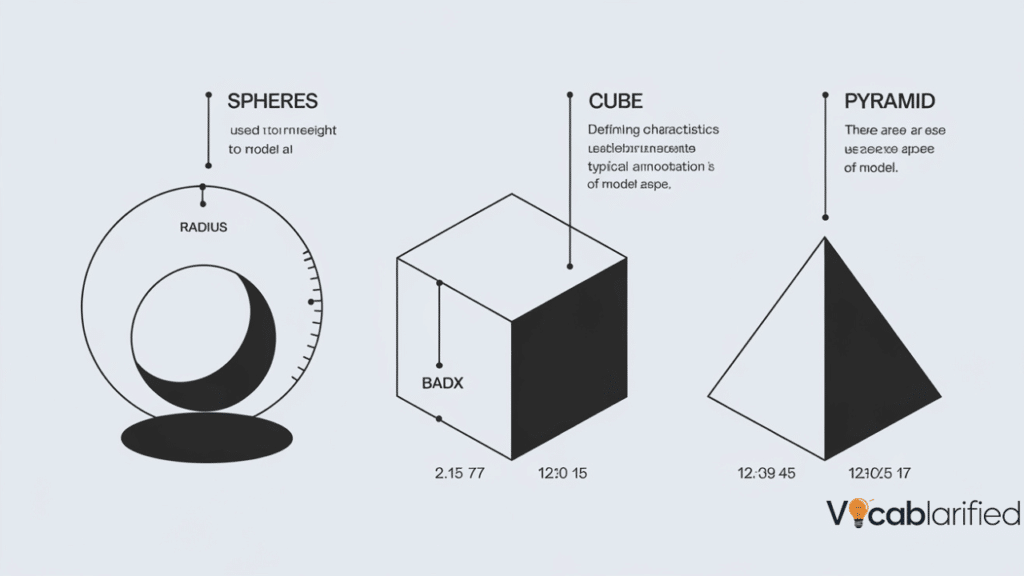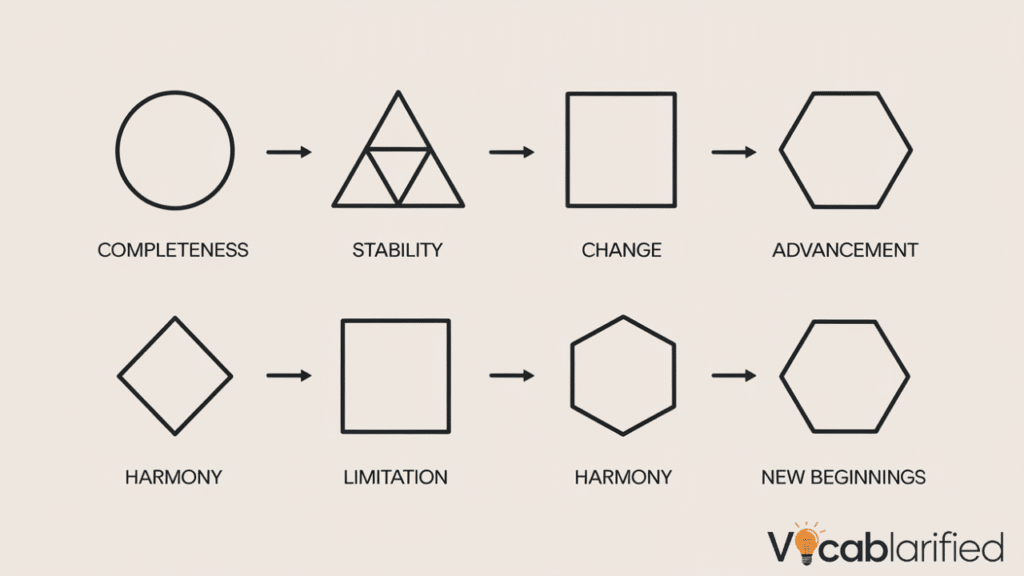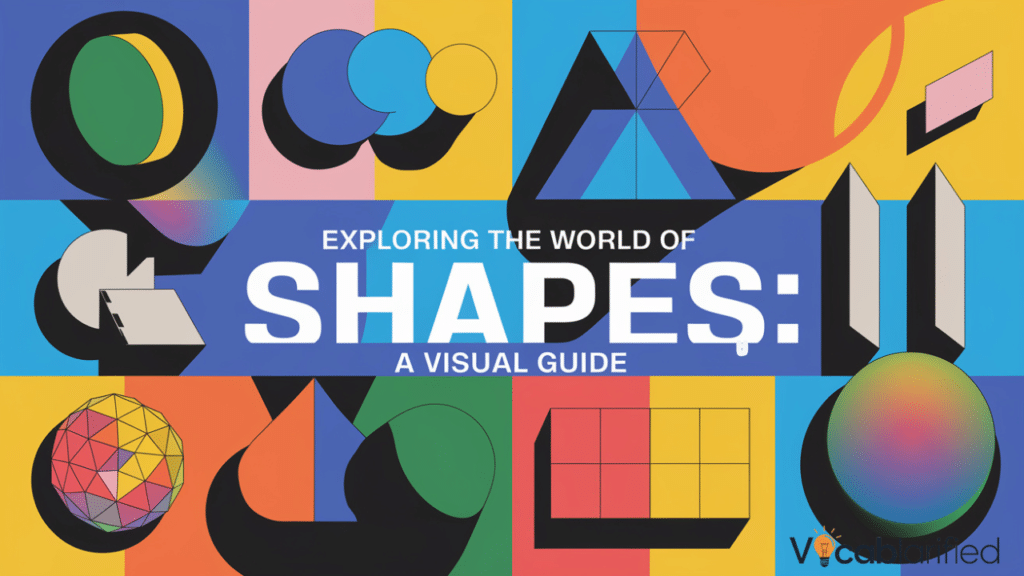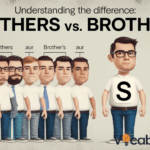Shapes are fundamental elements that define our visual understanding of the world around us. From the simplest geometrical shapes to complex architectural designs, these basic forms play a crucial role in how we perceive and interact with our environment.
This comprehensive guide will explore the fascinating universe of shape identification, delving into two-dimensional shapes and three-dimensional shapes that form the building blocks of design, communication, and scientific understanding.
The Foundation of Visual Communication
Every shape tells a story. Whether in design and architecture or everyday communication, shape vocabulary serves as a universal language that transcends cultural boundaries. Professionals across various fields rely on mathematical shapes to convey complex ideas, create stunning visuals, and solve intricate problems.
Understanding Basic Shapes
Two-Dimensional Shapes Unveiled
The world of two-dimensional shapes begins with the most fundamental forms that exist on a flat plane. These shapes are the building blocks of visual communication and design.
| Shape Name | Key Characteristics | Common Real-World Example |
|---|---|---|
| Circle | Perfectly round, no corners | Pizza box, clock face |
| Square | Four equal sides, four right angles | Window pane, sticky note |
| Rectangle | Four sides with opposite sides equal | Smartphone screen, book cover |
| Triangle | Three sides, three angles | Warning road sign, slice of pie |
| Pentagon | Five-sided polygon | Home plate in baseball |
| Hexagon | Six-sided polygon | Honeycomb structure |
You Might Like: Wife’s or Wives’? Unraveling the Mystery of Possessive Forms
Practical Applications in Everyday Life
Consider Sarah’s email design project for a local bakery. She carefully selected shape identification techniques to create a logo that captures the essence of the business. The circle represented the warm, inclusive nature of the bakery, while subtle triangle elements suggested precision and craftsmanship.
Three-Dimensional Shapes Explored

Volumes and Spatial Understanding
Three-dimensional shapes add depth and complexity to our understanding of physical objects. These shapes occupy space and provide a more comprehensive view of geometric principles.
| Shape Name | Defining Characteristics | Typical Use |
|---|---|---|
| Sphere | Perfectly round in all directions | Basketball, globe |
| Cylinder | Circular base with consistent height | Tin can, water pipe |
| Cube | Six equal square faces | Dice, shipping container |
| Pyramid | Triangular base converging to a point | Ancient Egyptian monuments |
| Cone | Circular base tapering to a point | Ice cream cone, traffic cone |
You Might Like: What’s the Plural of Software? Is it Software or Softwares?
Symbolic Meanings of Shapes

Beyond Geometry
Shapes are more than mathematical constructs. They carry symbolic meanings that resonate deeply with human perception. Architects and designers leverage these intrinsic properties to create powerful visual experiences.
| Shape | Symbolic Meaning | Cultural Interpretation |
|---|---|---|
| Circle | Completeness | Harmony, infinity |
| Triangle | Stability | Strength, progression |
| Square | Solidity | Reliability, structure |
| Hexagon | Efficiency | Natural optimization |
| Pyramid | Aspiration | Achievement, hierarchy |
Professional Communication Through Shapes
In a recent marketing proposal, John from Creative Solutions used shape vocabulary to demonstrate a company’s growth strategy. He utilized a pyramid diagram to illustrate hierarchical progress, with each level representing a strategic milestone.
Shapes in Professional Contexts
Design and Architecture
Practical applications of shapes extend far beyond simple geometric exercises. Architects like Elena Rodriguez use geometrical shapes to transform abstract concepts into tangible structures that inspire and function efficiently.
Learning and Educational Tools
Visual Understanding Techniques
Educators recognize the power of shape identification as a critical learning tool. By breaking down complex visual information into fundamental shapes, students develop stronger spatial reasoning and analytical skills.
Technical Communication
Professional communicators leverage shapes to simplify complex information. Technical manuals, scientific presentations, and instructional materials rely on precise shape vocabulary to convey intricate details effectively.
You Might Like: What is the Plural of Chief? Chiefs or Chieves?
Advanced Shape Concepts
Complexity in Geometric Design
Shape identification becomes increasingly sophisticated as we explore more complex geometrical shapes. Beyond basic forms, professionals in various fields develop intricate understanding of geometric principles that transform simple shapes into powerful communication tools.
Interdisciplinary Shape Analysis
Different disciplines approach mathematical shapes uniquely. An architect might view a cube as a structural element, while a mathematician sees it as a perfect geometric form, and a graphic designer perceives it as a potential visual metaphor.
Shape Properties Explored
Geometric Characteristics
Understanding the properties of shapes requires deep analytical skills. Each shape carries unique characteristics that define its mathematical and practical potential.
| Shape Property | Scientific Description | Design Implication |
|---|---|---|
| Symmetry | Perfect balance of form | Visual harmony |
| Regularity | Consistent geometric rules | Predictability |
| Dimensionality | Spatial complexity | Structural potential |
| Angles | Geometric intersections | Structural integrity |
| Surface Area | Total external measurement | Material requirements |
Professional Scenario
In a recent architectural consultation, Michael Thompson demonstrated how understanding shape vocabulary could revolutionize sustainable building design. By analyzing the inherent properties of pentagon and hexagon structures, he proposed innovative eco-friendly building concepts.
Shapes in Professional Communication
Visual Storytelling
Communication in design relies heavily on strategic shape selection. Each geometric form carries implicit messages that transcend verbal communication.
| Communication Context | Preferred Shape | Psychological Impact |
|---|---|---|
| Corporate Presentation | Rectangle | Stability, professionalism |
| Creative Pitch | Circle | Innovation, inclusivity |
| Technical Proposal | Triangle | Progression, hierarchy |
| Product Launch | Sphere | Smoothness, completeness |
| Strategic Planning | Pyramid | Growth, structured approach |
Real-World Shape Applications
Emma Rodriguez, a marketing strategist, brilliantly demonstrated how real-world examples of shapes could enhance brand communication. Her presentation used geometric metaphors to explain complex business strategies, transforming abstract concepts into tangible visual narratives.
Technological Integration
Digital Shape Representation
Modern technology has expanded our visual understanding of shapes. Computer-aided design (CAD) and 3D modeling have transformed how professionals interact with two-dimensional shapes and three-dimensional shapes.
Cultural and Symbolic Dimensions
Beyond Geometry
Shapes transcend mathematical definitions, carrying deep symbolic meanings across different cultures and contexts. A circle might represent unity in one culture, while a triangle could symbolize spiritual ascension in another.
Educational Perspectives
Educators increasingly recognize shapes as powerful educational tools. By introducing complex geometric concepts through engaging visual representations, students develop enhanced spatial reasoning and analytical skills.
Emerging Trends
Future of Shape Design
Innovations in technology and design continue to push the boundaries of traditional shape identification. From biomimetic architecture to advanced computational design, shapes are becoming more fluid, adaptive, and multifunctional.
Practical Insights
Professional Development
Mastering shape vocabulary provides professionals with a significant competitive advantage. Whether in architecture, marketing, engineering, or graphic design, a nuanced understanding of geometric principles opens unprecedented creative possibilities.
Conclusion
Shapes are far more than simple geometric constructs. They are dynamic, powerful communication tools that bridge mathematics, design, psychology, and cultural expression. By understanding their intricate properties and potential, professionals can unlock new dimensions of creativity and innovation.
Practical Applications of shapes continue to evolve, demonstrating that our geometric understanding is a constantly expanding frontier of human knowledge and imagination.
Shapes are more than mere geometric figures. They are a universal language of visual communication, bridging gaps between disciplines and cultures. From the simplest circle to the most complex architectural design, shapes continue to shape our understanding of the world.

Emma Carter is an experienced blogger at Vocablarified. She enjoys helping people expand their vocabulary and improve their language skills. With a warm and approachable writing style, Emma makes learning new words fun and accessible. When she’s not writing, she loves reading books and discovering new phrases to share with her readers. Emma is passionate about making language learning an enjoyable journey for everyone.







